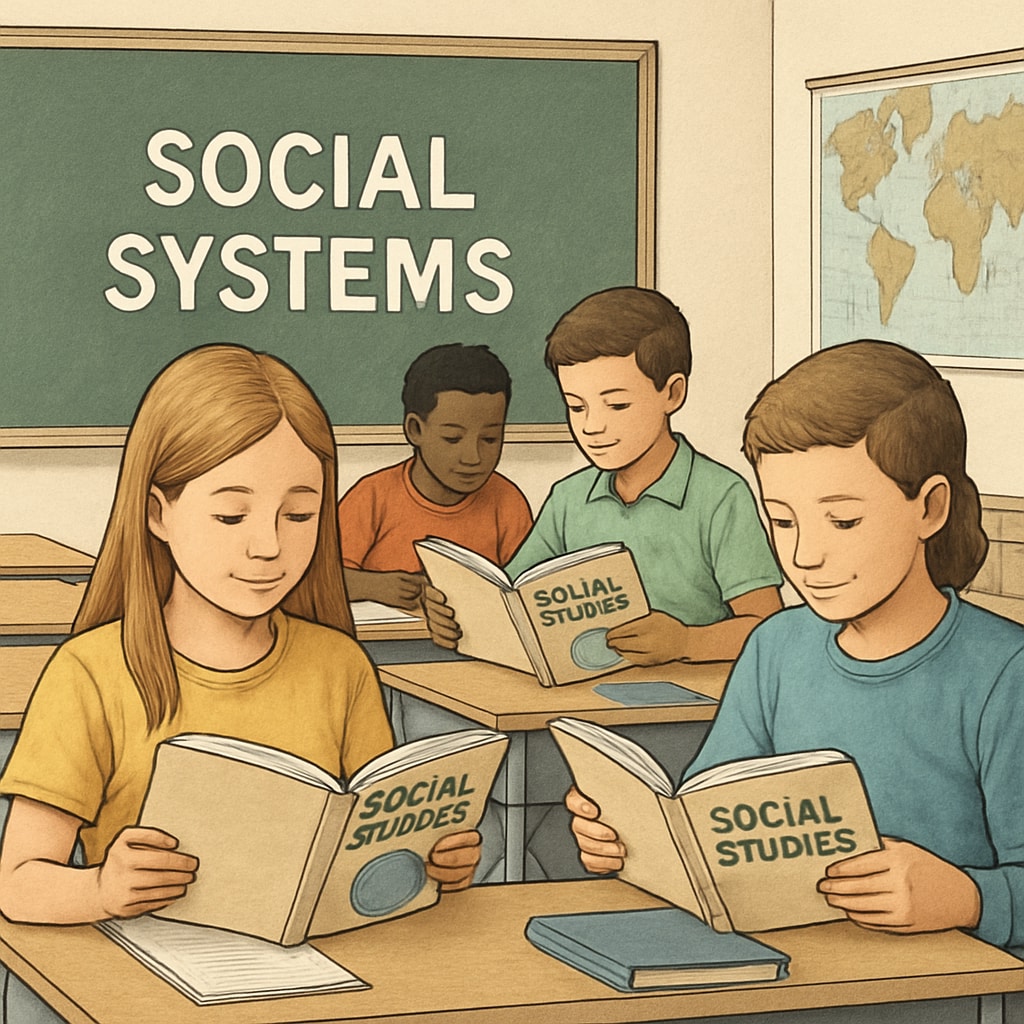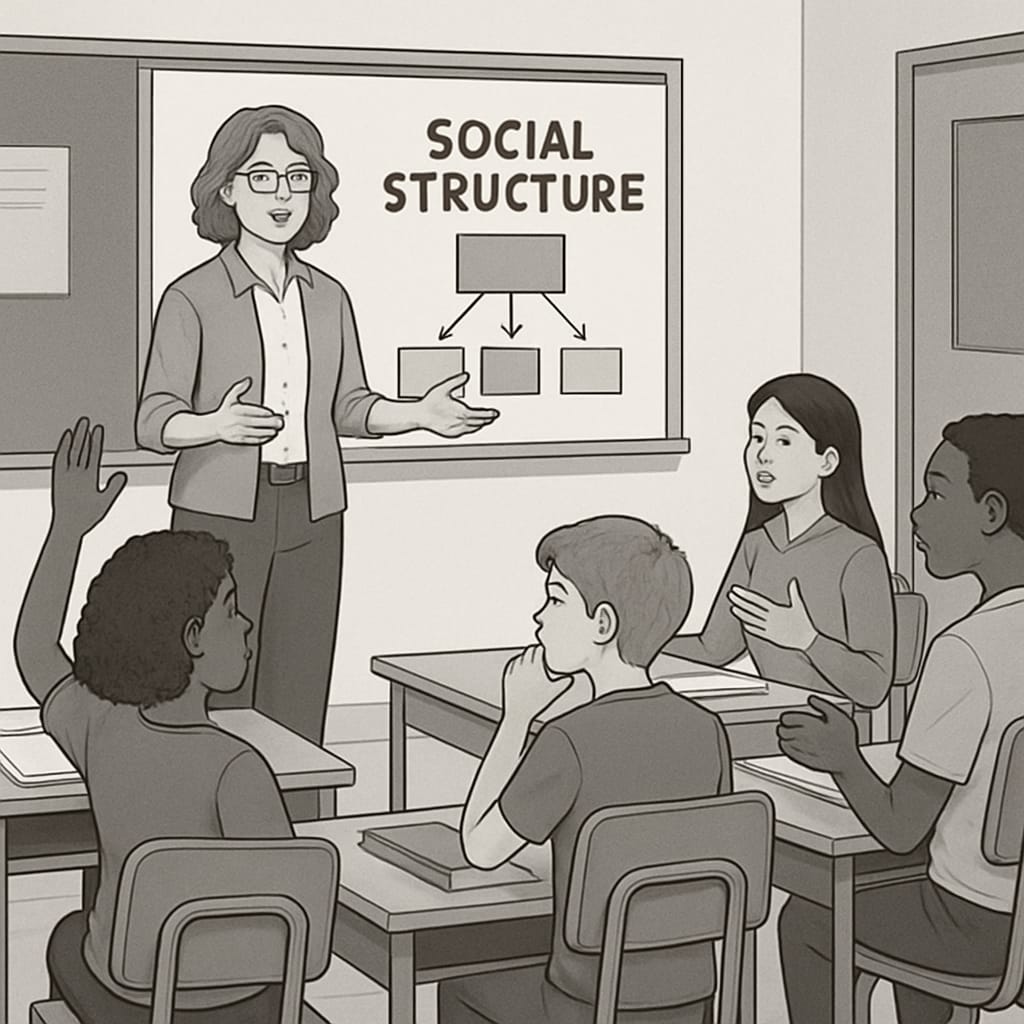Recent discussions about class structure, social studies, and rigid stratification have emerged after a concerned parent flagged a controversial passage in their child’s sixth-grade textbook. The textbook allegedly suggested that an individual’s birth into a specific social class largely determines their life’s trajectory. This incident raises critical questions about the balance between accurately portraying societal realities and fostering a sense of opportunity and empowerment in young learners. How should K12 educational materials approach such nuanced topics without instilling a sense of fatalism in students?
The Role of Social Studies in Shaping Perspectives
Social studies as a subject plays a pivotal role in helping students understand the complexities of society, including its history, structures, and challenges. However, the inclusion of concepts like rigid stratification—where social mobility is perceived as nearly impossible—can be polarizing. While it is essential to present an honest depiction of societal inequalities, it is equally important to avoid discouraging students from believing in their ability to create change.
For example, textbooks may use historical or global examples to explain class systems, such as India’s caste system or feudal Europe’s hierarchy. While these examples help contextualize the concept, they often fail to highlight avenues for overcoming these limitations, such as education, innovation, and social reforms. This one-dimensional portrayal can inadvertently reinforce stereotypes or perpetuate a deterministic worldview among young readers.

Balancing Reality with Aspiration: The Educator’s Challenge
Educators face a delicate challenge: how to strike a balance between addressing societal realities and inspiring students to challenge inequities. Presenting rigid stratification as an unquestionable norm may inadvertently discourage critical thinking and foster a sense of helplessness. On the other hand, glossing over systemic barriers could leave students ill-prepared to navigate or address real-world challenges.
One approach to achieving this balance is by framing discussions on class structure within a broader context of social mobility and progress. For instance, educators could supplement textbook content with stories of individuals or communities who have overcome systemic barriers. Such narratives can serve as powerful counterexamples, illustrating that while barriers exist, they are not insurmountable.
Additionally, educators can encourage students to critically analyze the content they read. Teachers might pose questions like, “Do you think these systems still exist today? If so, how have they changed?” or “What factors can help people move between social classes?” These discussions not only deepen understanding but also empower students to think constructively about solutions.

The Role of Parents in Guiding Young Minds
Parents also play a vital role in helping children navigate complex topics like class stratification. Open, honest conversations at home can complement classroom learning and provide additional perspectives. For example, a parent concerned about deterministic language in a textbook might discuss their own experiences or share stories of resilience and success.
Furthermore, parents can advocate for more balanced educational materials by engaging with schools and curriculum developers. Constructive feedback, like suggesting the inclusion of diverse perspectives and success stories, can help ensure that textbooks inspire as much as they inform. For parents who feel unprepared to address such topics, resources like parenting guides and educational forums can provide valuable support.
Revisiting Curriculum Standards: A Call for Collaboration
This incident highlights the need for greater collaboration between educators, parents, and curriculum developers. A more inclusive process of curriculum design—one that incorporates diverse perspectives—can help create materials that are both accurate and empowering. Policymakers and education boards must also ensure that textbooks undergo rigorous reviews to identify potentially problematic content.
Organizations like the National Council for the Social Studies have outlined principles for creating balanced and inclusive educational resources. Aligning textbooks with such guidelines can help mitigate controversies and ensure that students receive a well-rounded education.
Conclusion: Educating for a Better Tomorrow
The debate surrounding class structure, social studies, and rigid stratification underscores the profound influence of educational materials on young minds. While it is crucial to present an honest picture of societal hierarchies, education should also serve as a beacon of hope and possibility. By fostering collaboration among parents, educators, and policymakers, we can create curricula that not only inform but also inspire students to envision and work toward a more equitable future.
Ultimately, education is not just about understanding the world as it is but also about imagining the world as it could be. Striking this balance will ensure that students are equipped to face challenges while believing in their potential to drive change.
Readability guidance: This article contains short paragraphs, avoids excessive use of passive voice, and includes transition words to enhance flow. Lists and real-world examples are used to clarify key points, ensuring accessibility for readers at various levels.


